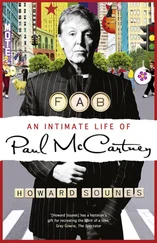Once the ventilator was breathing for her, Mira stabilized. “Color and O2 status slowly improved,” says the record. There was a noticeable change in the air in the operating room; she had been successfully resuscitated, the first and most important of a long series of steps that would have to go right. A nurse took a photo of Mira; in it her eyes are squeezed shut and she is grimacing around the tube in her mouth. Lying on the operating table, I couldn’t see her, but I said her name out loud—“Mira”—so she would know I was there. And then, as I was being sewn up, she was whisked away.
What strikes me now is how much human ingenuity and skill and technology was marshaled there to save her, and how utterly helpless and, in a way, incidental, she and I both were. My body was unable to sustain her; her body was unable to sustain itself. She was not so much alive as in limbo.
Afterward, I was confused. Everything seemed to be moving slowly and strangely, reality twisted and distorted. My body felt like an empty house that had been vacated in a rush, leaving dirty dishes in the sink. I couldn’t figure out why I was bleeding from between my legs, since I seemed to have had an operation on my stomach. The muscles in my lower abdomen were twitching violently. It seemed suddenly crucial that I delete the pregnancy app on my phone, since I was no longer pregnant, and my baby was definitely not the size of a butternut squash. I remember a doctor plopping my placenta into what I thought was a takeout container for noodle soup. (It was actually a lab container.)
During that first hour, we were not allowed to see Mira. After they stabilized her in the NICU, Amol was able to visit. The photos that a nurse took of that first father-daughter encounter showed Amol bent over a riot of tubes and lines that hid our 1-pound, 13-ounce daughter.
I had to be able to stand up and get into a wheelchair without fainting before I could go to the NICU myself. In the middle of that first night, after a few false starts—one of which ended in a full-on blackout—I managed to plant myself in the wheelchair. I remember what seemed like a cold breeze on my face; the wheelchair seemed to be moving very fast down a very white hallway, into an elevator, down to the ninth floor, then another white hallway, shoes squeaking. As the automatic doors swept open, I had a sudden sense that I wasn’t ready, that this could not be happening, and an equally strong and contrary urge to get to her, find her, see her.
Amol pushed me down a hallway, past rows of incubators, to a hushed, darkened back room, where Mira lay on her back inside what looked like a space-age pod, immobilized by the ventilator that rhythmically inflated her skeletal chest. She was naked except for the world’s tiniest diaper; her body was reddish, her forehead creased in what looked like discomfort or worry, lots of fine black hair tufting out of the tiny knit cap on her head. Her blunt little nose was so obviously Amol’s that we had recognized it on ultrasounds. Her hands looked long and elegant, her feet strangely large next to her emaciated legs. Her still-forming ears were fused to the side of her head in whorls. She didn’t seem to have nipples yet; weeks later they just appeared one day. Her torso was covered with sticky sensors that monitored her vital signs; she had an IV line in her umbilical stump. There were more leads, lines, and tubes than baby.
“You can touch her,” a nurse said, popping open one of the portholes for me. I could touch her? I put my hand into the warm incubator and gingerly placed my index finger on the sole of her one-and-a-half-inch foot. There is a photo of that moment, me in a hospital gown looking down at her through the plastic. She is only a foot or so away, but I look like I am staring into the far distance.
I didn’t think of it at the time, but I had been in a NICU once before.
There is another photo, this one a Polaroid from 1979: It is of my mother and father standing in front of an incubator, this one more glass box than spaceship. My mother, in her own hospital gown, is reaching through the portholes to cup my body in her hands. An IV protrudes from the top of my head. I was 3 pounds, 14 ounces, 2 pounds more than my own daughter would be at birth.
The look on my mother’s face in the photo is identical to my own, across thirty-five years: love, terror, and exhaustion, the same cocktail coursing through the veins of most brand-new parents. But something else, too: not guilt, exactly, but something close to it—helplessness. Everyone realizes eventually that they can’t protect their children from suffering. A premature birth is a particularly crushing introduction to that concept. Fundamentally, a mother’s body is supposed to be able to cradle and sustain a fetus until it’s fully built: ready to breathe air, drink milk, be held.
I don’t know much about the circumstances of my own birth, and my twenty-something self didn’t ask my mother the questions my thirty-something self would have, had she lived. I know I was due in November but born in September, likely around 32 weeks’ gestation. I was dangerously anemic and jaundiced, and I needed to be transferred by ambulance to Women & Infants Hospital in Providence, Rhode Island, for an exchange blood transfusion, in which all of the blood in a baby’s body is swapped out for donor blood a little at a time. One possible explanation for both the preterm labor and the extreme jaundice—one that I can’t verify because both my parents are dead and the medical records are gone—is Rh disease, a condition in which, because of a mismatch in blood type, a mother’s immune system attacks a fetus’s blood. It is as though the mother is allergic to the baby. (Rh disease is now treatable with medication the mother can take during pregnancy.)
In both my mother’s pregnancy and mine, there was nothing wrong with us or our babies. None of us were sick. (In this, of course, we were lucky.) It was the pregnancy itself—the organism of us together—that went wrong. For my mother, my daughter, and me, the only cure was the end of the pregnancy and the clumsy, miraculous gestation science could provide.
The NICU is both futuristic and primal. It’s a place where babies the size of your hand are saved by some of the most advanced technology in the world, but also where all the wizardry of twenty-first-century medicine is a crude and ineffective substitute for a human uterus. Sometimes it is a place where parents hold their babies for the first time only when it’s been decided to let them die. It’s a place where we, the mothers, sit next to the pods that are doing the work our bodies should have done: breathing for, warming, and feeding our babies.
In the soup of postpartum hormones, it hurt me physically to look at Mira. I found myself taking one painful breath and then another, unable to do anything except live from one second to the next.
The first few days of an extremely low-birth-weight baby’s life are critical. Mira was in the back of the NICU, where the smallest, sickest babies were sequestered. No one could say why the placenta had failed, but it could mean an infection or a genetic abnormality. She was put on antibiotics, just in case, and held under blue lights to counter her high bilirubin count. She wore a little mask to protect her eyes from the lights. Between that, the ventilator, and the tape holding it all in place, most of her face was obscured. She flailed and jerked and shuddered, her little hands reaching and stretching. For the first few days she got intravenous nutrition through a central line straight into a large vein near her heart before a feeding tube was slipped down her throat and secured in place with more tape on her chin. She had one-third of a cup of blood in her entire body.
Every morning the attending neonatologist, the fellows, the residents, and the nurses gathered around each NICU bedside one by one and summarized each baby’s status and the plan for the day; it’s called rounding. On December 2, the morning of her third day, the day I was to be discharged, I sat in my hospital gown next to her pod clutching a notebook and wrote down everything Dr. K.—the attending neonatologist, kind, patient, petite, with a ramrod-straight bearing—said about Mira. My notes begin: “RDS: premature lung disease (???). 780 grams. Peeing a lot. Caffeine. (???) BP stable.”
Читать дальше












